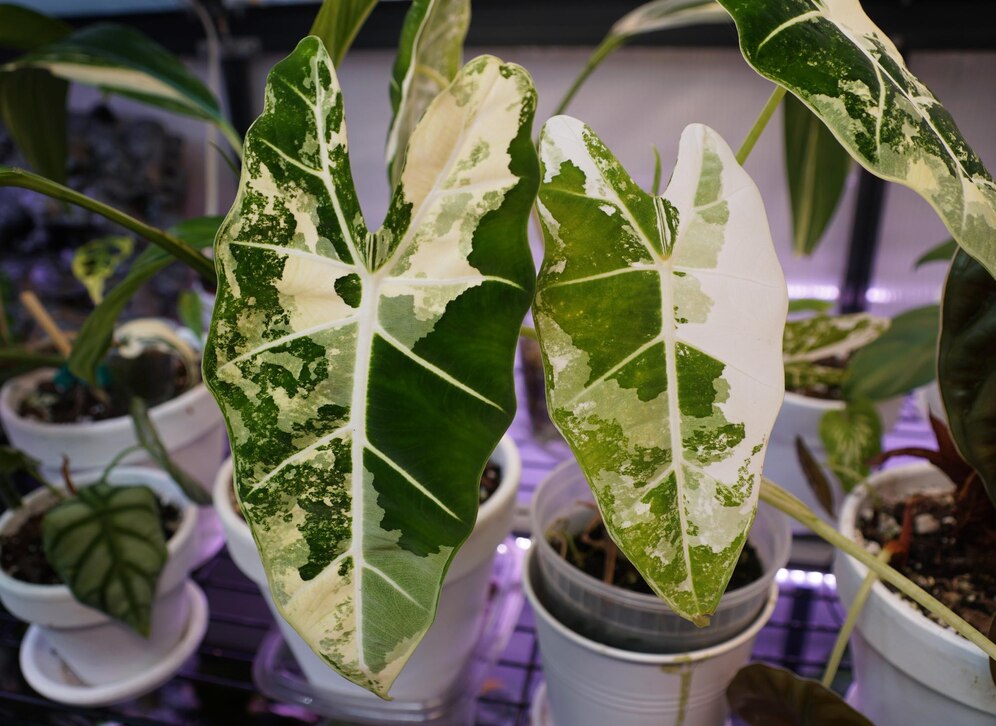When it comes to aroid potting mix, everyone’s got their favourite amendments. A lot of the popular amendments are parroted back to new plant growers without much explanation of why they are used.
Over the years, I’ve found I’m constantly customizing the mix with what I have on hand. While I some amendments are I considered ‘must haves’ (I’m looking at you, perlite), in other cases I’ll use it if I have it, replace it with something else if I don’t, or skip it entirely.
Ultimately the goal is to provide a light, airy mix which doesn’t compact into mud over time. This can be accomplished by amending larger chunks (ie. pine bark), or by amending with something that keeps its structure (ie. perlite or lava rock).
Popular potting mix amendments, and their use in achieving a chunky mix
Here’s a quick breakdown of some of the popular amendments I find myself using. I’ve added links to buy each on Amazon where possible. These are affiliate links; you don’t pay more but I get a small kick back for recommending them.
- Pumice
Adds aeration and drainage. Lightweight volcanic rock that holds some water without becoming soggy. Sold on Amazon.
Scientific backing: Yes, widely studied in horticulture for aeration and root health. - Tree Fern Bark
Provides chunky structure and mimics epiphytic environments. Common in orchid and exotic plant mixes.
Scientific backing: Limited; mostly anecdotal from experienced growers. - Pine Bark
Improves drainage and acidity. Breaks down slowly, adding organic matter. Sold on Amazon.
Scientific backing: Yes, well-documented in nursery and horticultural media. - Fluval Stratum
Aquarium substrate used for trace minerals and porous structure. Adds moisture retention. Sold on Amazon.
Scientific backing: Minimal for aroids; anecdotal evidence only, but my aroids seem to like it. - Perlite
Expands aeration, reduces compaction, and lightens soil. Sold on Amazon.
Scientific backing: Yes, standard amendment in potting mixes. - Vermiculite
Retains water and nutrients. Improves cation exchange but may hold too much moisture for some aroids. Sold on Amazon.
Scientific backing: Yes, especially in propagation and seed-starting. - Lava Rock
Very porous and heavy. Adds long-term structure and aeration, doesn’t break down. Sold on Amazon.
Scientific backing: Limited, but used in bonsai and hydroponics. - Coco Coir
Eco-friendly peat substitute that retains water and resists compaction. Sold on Amazon.
Scientific backing: Yes, used globally in soilless agriculture. - Hydroton (LECA)
Clay pellets for semi-hydroponic systems. Allows oxygen to reach roots and wicks moisture. Sold on Amazon.
Scientific backing: Yes, standard in hydroponic growing. - Kelp Powder
Adds trace minerals and natural plant hormones (cytokinins, auxins). Stimulates root growth. Sold on Amazon.
Scientific backing: Yes, especially for root and foliage development. - Charcoal (Horticultural)
Absorbs impurities and toxins, slightly improves aeration. Sold on Amazon.
Scientific backing: Mixed. Widely used, but benefits depend on quantity and type. - Worm Castings
Rich in nutrients and beneficial microbes. Boosts microbial life and slow-release fertilization. Sold on Amazon.
Scientific backing: Yes, excellent for overall plant health. - Sphagnum Moss
High moisture retention, good for propagation or young roots. Sold on Amazon.
Scientific backing: Yes, standard in propagation but compacts over time. - Sand (Coarse or Horticultural)
Improves drainage and weight; not used alone but as a small amendment. Sold on Amazon.
Scientific backing: Yes, especially in cactus and succulent mixes. - Rice Hulls
Lightweight, organic aerator. Biodegradable alternative to perlite. Sold on Amazon.
Scientific backing: Emerging. Some support as sustainable amendment. - Akadama
Hard-baked clay used in bonsai. Retains moisture while providing structure. Sold on Amazon.
Scientific backing: Mostly anecdotal; used more in Japan and bonsai contexts. - Zeolite
Absorbs ammonium and slowly releases nutrients. Can improve soil structure. Sold on Amazon.
Scientific backing: Yes, used in both horticulture and agriculture.
A lot of the time I’m just mixing them until they “look right”, which sounds like a cop out but other growers will say the same. Everyone has their own mix and none of it is very ‘set in stone’ per say.
This hobby is often flying by the seat of your pants, patience, learning and figuring things out as you go. The main point is to give your roots air, and keep them moist without keeping them wet. Sounds easy enough, but takes some trial and error to get there.
Leave a comment if you’d like some additional info about potting mix, otherwise good luck on your plant journey!



